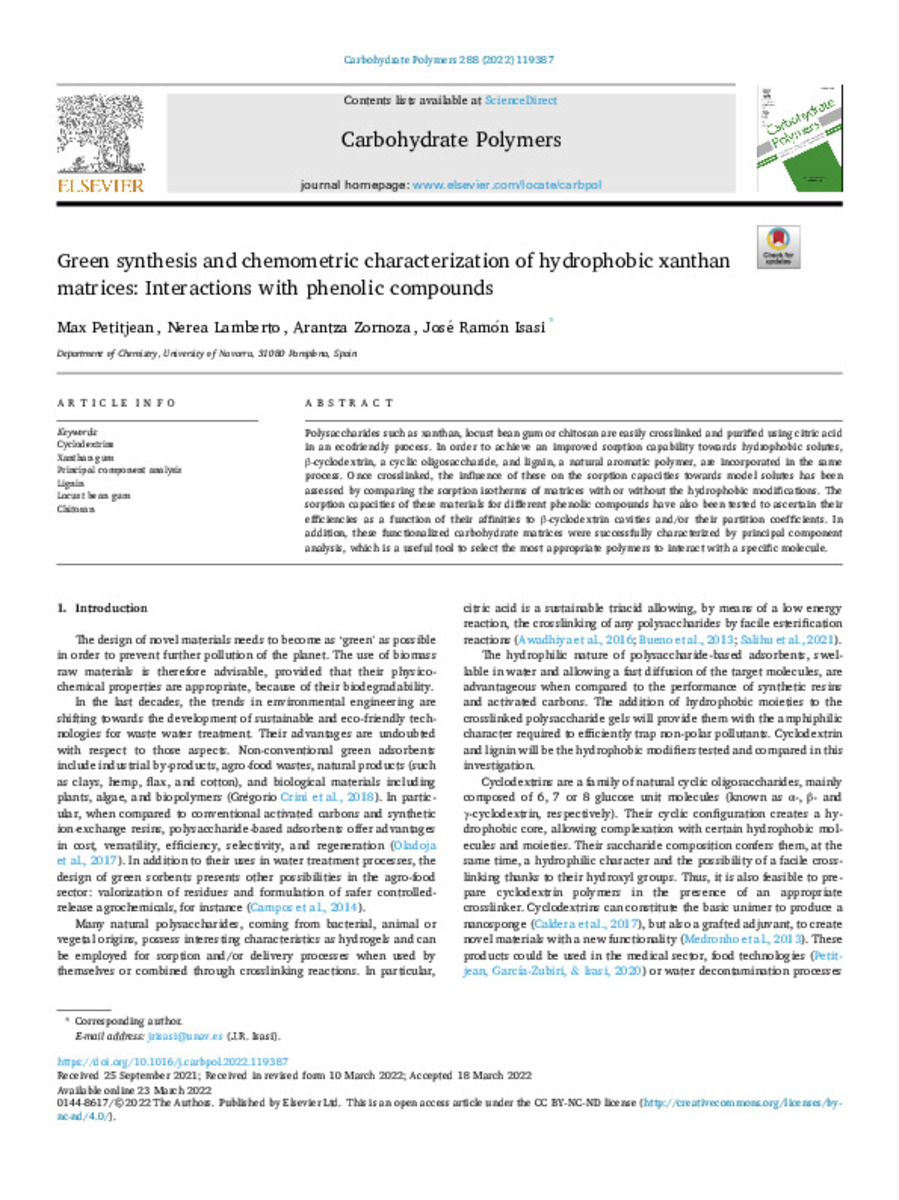Green synthesis and chemometric characterization of hydrophobic xanthan matrices: interactions with phenolic compounds
Keywords:
Cyclodextrins
Xanthan gum
Principal component analysis
Lignin
Locust bean gum
Chitosan
Note:
This is an open access article under the CC BY-NC-ND license
Citation:
Petitjean, M. (Max); Lamberto, I. (Iranzu); Zornoza, A. (Arantza); et al. "Green synthesis and chemometric characterization of hydrophobic xanthan matrices: interactions with phenolic compounds". Carbohydrate Polymers. (288), 2022, 119387
Statistics and impact
0 citas en

0 citas en

Items in Dadun are protected by copyright, with all rights reserved, unless otherwise indicated.











